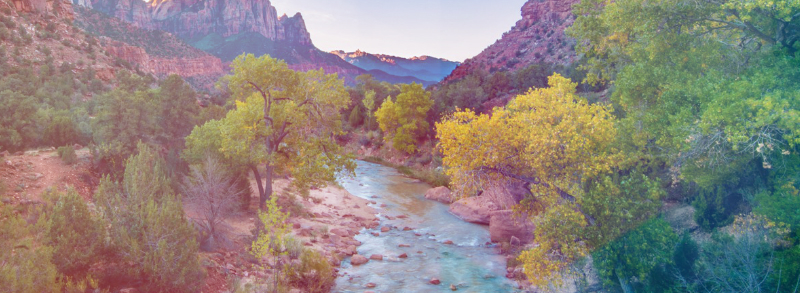One of my favorite spots in Texas is Pedernales Falls State Park with its falls and rushing water. I have always been fascinated by flowing water, the sound of it thrashing through crevices or smoothly flowing around a small obstruction. I am as content sitting on a ledge listening to the thunderous sounds of a fast flowing stream as I am sitting in close to watch the smallest flow of water meticulously finding a path around the contours of the rock.
Nothing seems to be able to stop the flow short of a dam. Regardless of the obstacles, a path is eventually found. The contour is sometimes very sharp due to the recent breakaway of a portion of the rock, but over time, despite the deepest cuts and scars etched into the rock, the surface slowly gains a smooth feel due to years of water polishing the sharp edges away.
Water, a Metaphor of Life!
It is no wonder that the use of water as a metaphor for life is so prevalent in many of the religions of the world. Often, it is the life-giving aspect of water that is so often referred to as it enriches the soil and breaks free the dormant life found in the seedling.
Water is also often used to illustrate the absence of life. It is the scene of the desert that evokes images of the parched earth, straining for any relief that the tiniest amount of moisture can bring, evidenced by the sprouting of desert flowers after the smallest of rains. It is the flowing water that evokes a different image that speaks to the flow of life, just as we describe the flow of the stream.
Life is this flowing experience that often takes a course we do not plan. Life, the water, runs into the walls of our lives, the rock that serves as walls for the stream. Sometimes the wall gives way, our lives seem to crumble around us without explanation. The water may not be able to break through obstacles, but it will find a path around until over time a more direct path can be carved out.
Life often takes a similar path. We are impacted by the path ahead of us. We often have to change course or direction, but just as the source of the water comes from way upstream, the source of our life comes from our creator and sees no end. We continue to flow, to move forward despite the sharp edges that life inflicts upon us, yet over time the sharpest of edges will slowly be rounded and smoothed away. The sharper the edge, the longer it may take, but the edge will be tempered. Life will only stop moving forward when we are lost to this world for another place, just as water will only stop flowing when it is dammed up or its run is depleted.
Conclusion
In the Catholic tradition, we observe Lent in preparation for Easter Sunday when we commemorate the risen Christ. Lent is a time marked by the desert motif, a time of dryness, where the rivers of life have dried up, but the seeds of life only remain dormant. There’s nothing worse than walking into the campus ministry office and reaching for the candy jar, only to find rocks where there was once chocolate!
Yet, we await the risen Christ and the wellspring of life in his resurrection. The dry bowl does not signify death, at least a permanent one. Life does not stop during Lent. We live, we work, we love, we hurt, and are reminded of the scars that invade our life on this earth. We are also reminded though that God can smooth the sharpest edges of our lives, and that redemption comes from the well-spring of God and His loving kindness. The waters flow and seep into the ground restoring the water table, just as the love of Christ seeps into the deepest recesses of our lives, soothing the deepest aches and pains of the body.
Dr. James Puglisi is the Associate Director of Campus Ministry at St. Edward’s University in Austin, Texas. He received his Bachelor of Arts (1984) from Allegheny College, Meadville, PA in Anthropology of Religions. He holds a Master of Arts in Higher Education (1996) from Geneva College, Beaver Falls, PA, and a Master of Arts in Applied Theology (2002) from Wheeling Jesuit University. He was awarded a Doctor of Ministry from Catholic Theological Union (2008) in the area of Practical Theology. His doctoral writing was titled “Shalom: The Role of Truth Telling in Creating Communities of Racial Reconciliation within Institutions of Christian Higher Education.” He is actively involved in interfaith and ecumenical work at St. Edward’s University and in the larger Austin Community. In addition to his work in campus ministry, he teaches courses in the cultural foundations curriculum in the area of migration, culture, and diversity. He has presented at conferences on racial reconciliation and inter-religious dialogue. He is originally from Pittsburgh, PA.

